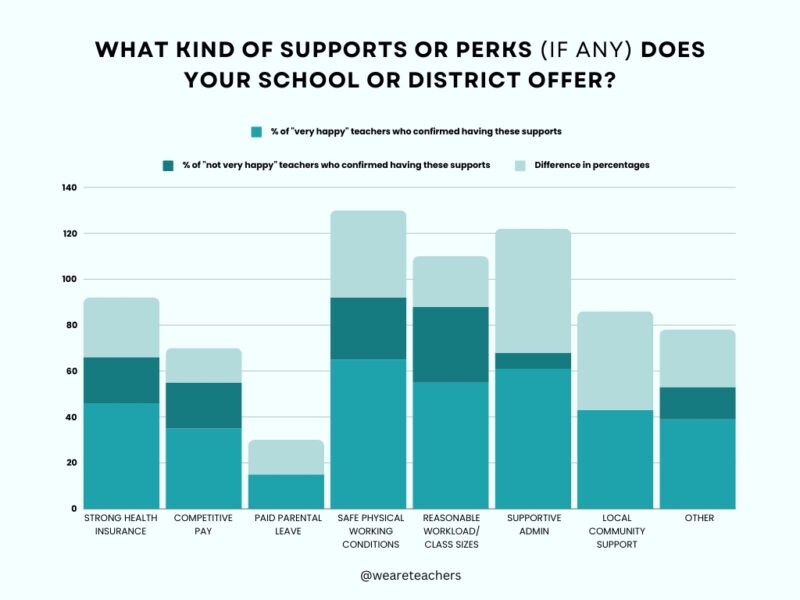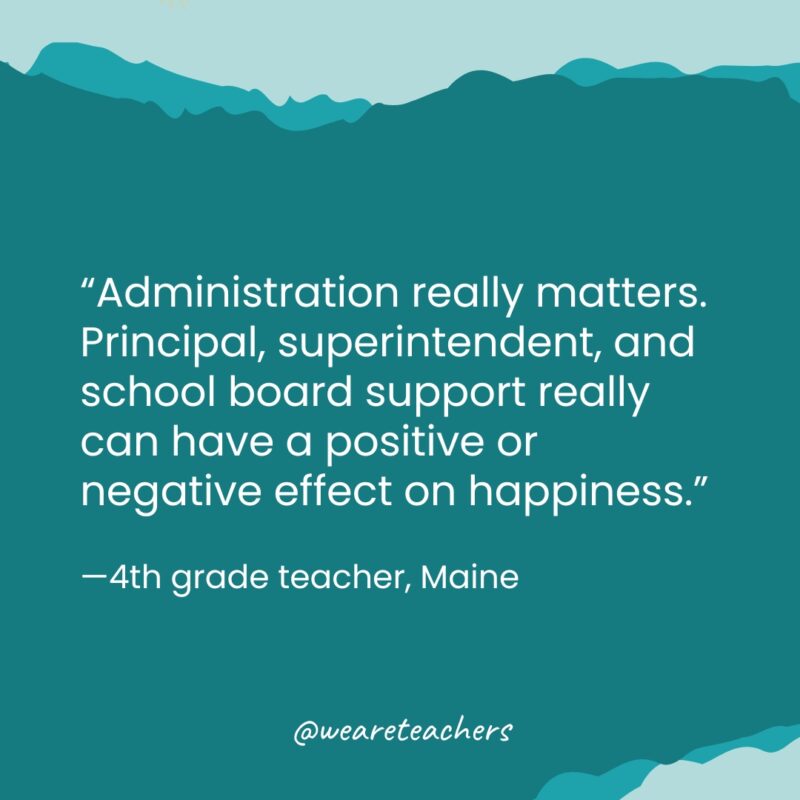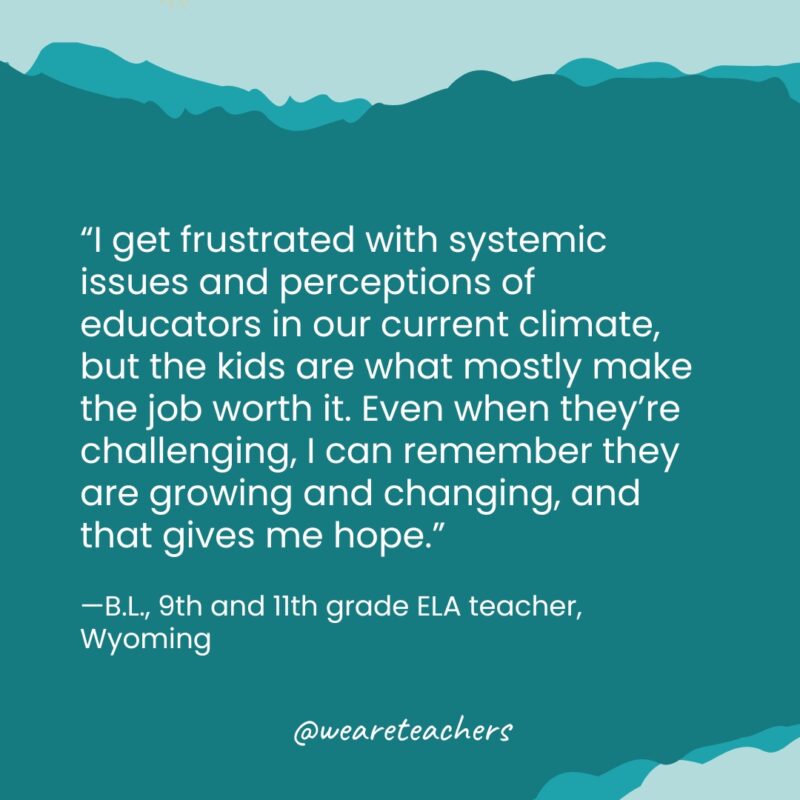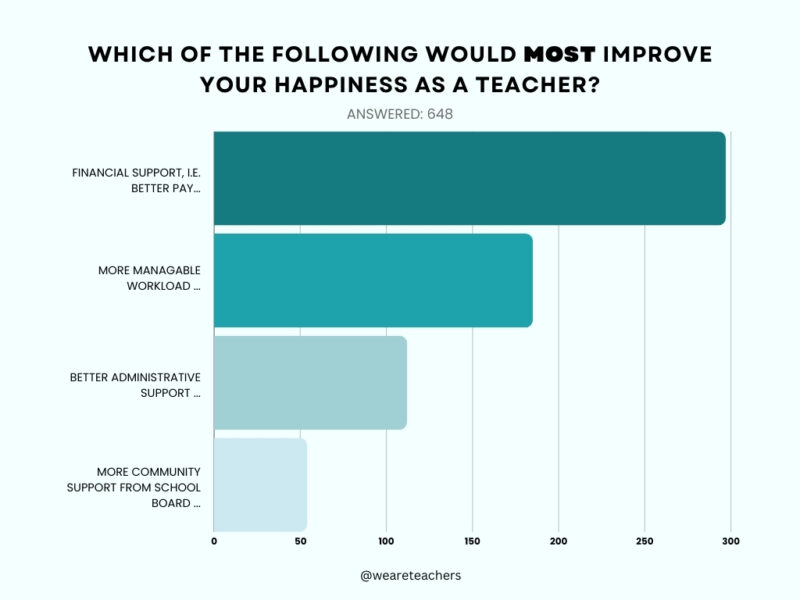It’s not an easy time to be a teacher—and it hasn’t been for a while. Between the day-to-day struggles and the complex, overarching systems making things difficult, the teaching profession is no walk in the park. But we know that some teachers are happy. Like, exceedingly happy. So we wanted to find out: Where are teachers happiest? And what do they have that other teachers don’t?
We recently conducted a survey with over 650 educators to find out where teachers in the United States are happiest. Whether you’re a fellow educator wanting to find out for yourself or a stakeholder in public education (that’s literally everyone else!), we’ve got all the info on where and why teachers have the most to smile about.
The top 5 states with the happiest teachers: California, Illinois, Pennsylvania, Texas, and New York.
The next five states with the happiest teachers? New Jersey, Ohio, Oklahoma, Virginia, and Wisconsin.
The top 5 states with the least happy teachers: New Jersey, Ohio, Florida, Georgia, and Louisiana.

The next five states with the least happy teachers? Mississippi, North Carolina, Texas, Utah, and West Virginia.
Why do we see Texas, New Jersey, and Ohio on both the happiest and unhappiest lists? Like any state, these states offer massively different teaching experiences across districts and environments. Interestingly, we found far more of a correlation between what happy teachers have—perks, supports, etc.— than where they are located.
What do happy teachers have that unhappy teachers don’t? Supportive administrations, local community support, and safe working conditions.

Look at how many happy teachers report having each perk compared to the number of unhappy teachers who don’t. (It’s worth noting that so many of what we’ve listed as “perks”—feeling safe at school, a reasonable workload, and insurance—should be part of the job, not extras!)
We also think it’s no coincidence that not a single unhappy teacher reported that they felt local community support. Knowing that your community supports teachers and education is huge. Even on your toughest day in the classroom, you at least know you’re valued in the community.
The perk we really need to start offering teachers everywhere? Paid parental leave, clearly.
The 3 perks teachers would appreciate most? Competitive pay, reasonable workload and class sizes, and supportive administration.
It’s no surprise that some of the top perks reported by happy teachers are the same perks most teachers wish they had. These three perks were followed by strong health insurance coverage (30%), safe physical working conditions (18%), and bonus/performance-based pay (17%).
Teachers have been saying it forever, but administration can make or break a school. They set the tone for behavior, know how to retain talented teachers, and make teacher appreciation an everyday habit.

Overwhelmingly, teachers said the biggest reasons contributing to their unhappiness was not the day-to-day but the larger systemic issues in education (56%).
No surprise here. It’s like the door principle: What happens inside is not the problem—it’s what goes on outside.

Teachers’ career dissatisfaction has very little to do with the kids.
No matter where they fell on the happy/unhappy scale, on the whole, teachers rated their relationships with students as an area where they experienced more satisfaction than any other area.

There were many factors we expected to correlate with teacher happiness that just didn’t.
We thought that the type of teaching environment (e.g., rural, suburban, urban, small town), years of experience, number of preps, and the presence of a strong union might correlate one way or the other with teacher happiness. But filtering survey results for these factors didn’t produce a strong correlation in whether or not teachers reported being happy.
Bottom line? Teachers love what they do—they just want to be able to support themselves and their families.

If that’s a surprise to anyone, you haven’t been paying attention!

